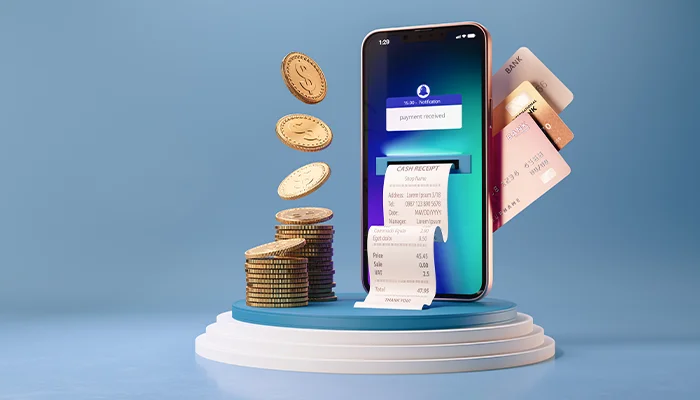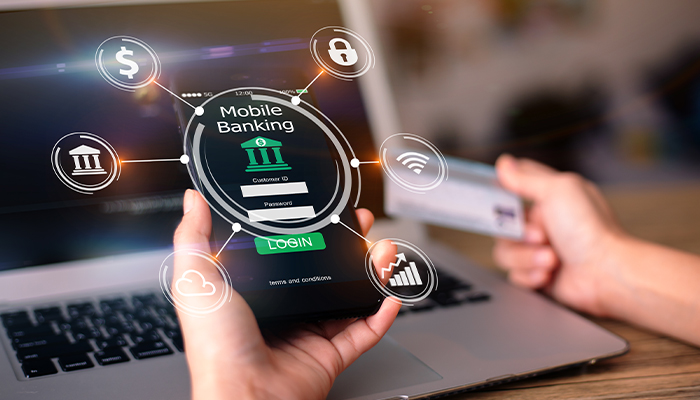How Much Does It Cost to Build a Mobile Banking App Like N26?

JAN, 16, 2024 12:40 PM
How Much Does It Cost to Build a Mobile Banking App Like N26?
In the ever-evolving landscape of Fintech, mobile banking apps have become indispensable for users worldwide. With the rise of digitalization, consumers are increasingly turning to mobile banking solutions that offer convenience, security, and a seamless user experience. N26, a pioneering mobile banking platform, has set the benchmark for excellence in this domain.
For entrepreneurs and businesses aspiring to develop a mobile banking app like N26, understanding the costs involved is crucial. In this comprehensive guide, we will explore the key factors influencing the cost of building a mobile banking app and provide insights to help you make informed decisions.
Understanding the Core Features:
Building a successful mobile banking app, akin to N26, requires a thorough understanding of its core features. These features are pivotal in delivering a seamless and secure user experience. Let's delve into each component:
User registration and authentication:
Secure and User-Friendly Registration Process:
The initial interaction with the app sets the tone for the user experience. A seamless and secure registration process ensures that users can quickly and effortlessly create an account.
Multi-Factor Authentication for Enhanced Security:
To fortify the app against unauthorized access, multi-factor authentication adds an extra layer of security. This could involve a combination of passwords, one-time codes, and biometric verification.
Account Management:
Real-time balance updates:
Providing users with real-time updates on their account balances enhances transparency and trust. Accurate and instantaneous balance information is a fundamental expectation.
Transaction History and Categorization:
A comprehensive transaction history allows users to track their spending and income patterns. Categorizing transactions further assists in budgeting and financial planning.
Fund Transfer Capabilities:
The ability to seamlessly transfer funds within the app is a core functionality. Whether it's between the user's own accounts or those of other users, efficient fund transfer capabilities are essential.
Payment Integration:
Integration with Popular Payment Gateways:
Enabling integration with widely used payment gateways facilitates smooth transactions. This is crucial for users to make payments, both online and offline, seamlessly.
Peer-to-Peer Transfers:
Facilitating peer-to-peer transfers within the app adds a social dimension. Users can split bills or send money to friends and family without relying on external platforms.
International Money Transfers:
In the globalized world, the ability to conduct international money transfers is a competitive advantage. Integrating secure and efficient international transfer options broadens the app's appeal.
Card Management:
Virtual and Physical Card Issuance:
Offering virtual and physical card options provides flexibility to users. Virtual cards are suitable for online transactions, while physical cards cater to in-person purchases.
Card blocking and unblocking:
Users should have the ability to swiftly block and unblock their cards in case of loss or suspicion of unauthorized use. This feature enhances security and user control.
Spending Categorization and Limits:
Empowering users to set spending limits and categorize their expenses aids in financial management. This feature contributes to a personalized and responsible financial experience.
Security Measures:
Two-Factor Authentication:
Two-factor authentication adds an extra layer of security beyond traditional passwords. It typically involves a combination of something the user knows (a password) and something they have (e.g., a code sent to their phone).
Biometric Authentication (Fingerprint, Face Recognition):
Leveraging biometric data for authentication, such as fingerprint or face recognition, enhances user convenience while ensuring a high level of security.
Secure Socket Layer (SSL) Encryption:
Employing SSL encryption secures the communication between the app and its servers. This is vital for protecting sensitive user data during transactions and interactions.
Notifications:
Real-Time Transaction Alerts:
Instant notifications for every transaction provide users with real-time awareness of their financial activities. This is crucial for fraud detection and overall financial awareness.
Account Activity Notifications:
Regular updates on account activities, beyond transactions, keep users informed about changes in their account status, security updates, and relevant announcements.
Customer Support:
In-App Chat Support:
Offering a direct communication channel within the app ensures quick problem resolution. In-app chat support allows users to seek assistance without leaving the platform.
FAQ Section:
A well-structured FAQ section addresses common queries, offering users a self-help option. This reduces the need for direct customer support for routine inquiries.
Help Center with Articles and Tutorials:
Providing users with resources like articles and tutorials in a comprehensive help center contributes to a positive user experience. It empowers users to navigate the app effectively.
Intuitive UI/UX Design:
User-Friendly Interface:
An intuitive and user-friendly interface simplifies navigation and enhances the overall user experience. Users should be able to perform tasks effortlessly, from checking balances to initiating transactions.
Smooth Navigation:
Streamlined navigation is essential for user engagement. The app should guide users seamlessly through various features and functionalities, minimizing confusion.
Personalized user experience:
Personalization, tailored to each user's financial behavior and preferences, creates a more engaging and relevant experience. This could involve personalized dashboards, recommendations, and alerts.
These core features lay the foundation for a robust mobile banking app. The successful integration of these elements not only ensures user satisfaction but also contributes to the app's security, usability, and overall success in the competitive Fintech landscape.
Factors Influencing Cost:

Developing a mobile banking app involves numerous factors that can significantly influence the overall cost. Understanding these factors is essential for accurate budgeting and project planning.
Platform (iOS, Android, Cross-Platform):
The choice of platform (iOS, Android, or both) is a critical determinant of development costs. Building for both iOS and Android requires more resources and time than focusing on a single platform.
Cross-platform solutions, while cost-effective, may come with trade-offs in terms of performance and limitations in utilizing native features. The decision here involves finding the right balance between cost efficiency and optimal user experience.
Development Team:
The expertise and location of the development team significantly impact costs. A team with experience in Fintech app development may demand higher rates, but it often ensures a higher-quality product.
Development teams in regions with higher living costs, such as North America or Western Europe, may charge more than those in more affordable locations, like Eastern Europe or Southeast Asia. The choice of a development team involves considering the balance between cost, expertise, and project requirements.
Design Complexity:
A sleek and user-friendly design is crucial for the success of a mobile banking app. The complexity of the design, including animations, custom graphics, and interactive elements, can impact development costs.
High-end design elements and a polished user interface contribute to a positive user experience but may require more time and resources during the development phase.
Third-Party Integrations:
Integrating external services such as payment gateways, financial APIs, and security tools is a common requirement for mobile banking apps. The complexity and number of integrations needed can significantly influence the overall cost.
Each third-party integration introduces additional considerations, including compatibility, security, and ongoing maintenance. The cost associated with third-party integrations should be carefully assessed during the planning stage.
Regulatory Compliance:
Compliance with banking and financial regulations is non-negotiable for mobile banking apps. Ensuring that the app adheres to industry standards and legal requirements adds an extra layer of complexity and cost to the development process.
Legal consultations, compliance checks, and the implementation of necessary features to meet regulatory standards are essential components that may increase development costs.
Security Measures:
Security is paramount in the financial sector, and implementing robust measures is a crucial aspect of mobile banking app development. Advanced security features like biometric authentication, encryption algorithms, and secure data transmission contribute to both development time and costs.
Investing in top-tier security measures is essential to build user trust and protect sensitive financial information.
Testing and Quality Assurance:
Rigorous testing is an integral part of mobile app development, especially in the fintech sector. Identifying and fixing potential vulnerabilities and bugs is crucial to ensuring the app's reliability and security.
The more comprehensive the testing process, including functional, security, and user acceptance testing, the higher the associated costs. Quality assurance is a critical investment to deliver a robust and error-free mobile banking app.
Maintenance and Updates:
Post-launch, ongoing maintenance and updates are necessary to address bugs, improve features, and ensure the app remains compatible with new operating system versions.
The cost of maintenance should be factored into the overall budget to provide continuous support, implement security patches, and introduce new features or improvements based on user feedback.
Estimating Costs:
Determining the costs associated with building a mobile banking app is a challenging task that depends on various factors. While providing an exact figure without specific project details is difficult, industry averages can offer a ballpark estimate. Here's a breakdown of estimated costs for different levels of mobile banking apps:
Basic Mobile Banking App:
Platform: Single (iOS or Android)
Features:
User registration is a simple and secure process for users to create accounts.
Account management: basic functionalities for real-time balance updates and transaction history.
Basic payment integration: integration with essential payment gateways for standard transactions.
Simple UI/UX design: A straightforward and user-friendly interface for easy navigation.
Estimated Cost: $50,000-$100,000
This range covers the development of a basic mobile banking app with essential features on a single platform. The cost varies based on factors such as the chosen platform, development team rates, and design complexity.
Standard Mobile Banking App:
Platform: Both iOS and Android
Features:
Enhanced account management: improved functionalities for transaction history, categorization, and fund transfers.
Advanced payment integration: integration with a wider range of payment gateways, including peer-to-peer transfers.
Card management: inclusion of features like virtual and physical card issuance, blocking, and spending categorization.
Notifications: real-time transaction alerts and account activity notifications. Improved UI/UX design: a more polished and user-friendly design with smooth navigation.
Estimated Cost: $100,000-$250,000
This estimate reflects the additional complexities involved in developing a mobile banking app for both major platforms (iOS and Android) and incorporating advanced features. The range considers factors such as design intricacies, increased functionality, and comprehensive testing.
Premium Mobile Banking App:
Platform: Both iOS and Android
Features:
All the core features mentioned earlier include user registration, account management, payment integration, card management, notifications, and customer support.
Top-notch security measures: implementation of advanced security features like biometric authentication and SSL encryption.
Third-party integrations: integration with external services, such as financial APIs and security tools, to enhance functionality.
Complex UI/UX design: inclusion of intricate design elements, animations, and personalized user experiences.
Estimated Cost: $250,000-$500,000+
Developing a premium mobile banking app involves investing in top-tier features, advanced security measures, and a highly refined user experience. The cost range reflects the complexity of incorporating high-end functionalities and ensuring a robust, secure, and aesthetically pleasing app.
It's crucial to note that these estimates are rough figures based on industry averages, and the actual cost can vary based on specific project requirements, the development team's expertise, and other influencing factors discussed earlier. Engaging in detailed discussions with development teams and considering project-specific nuances will provide a more accurate cost estimation for a mobile banking app tailored to your business needs.
Conclusion
Building a mobile banking app like N26 involves careful planning, consideration of key features, and adherence to regulatory standards. While the costs may seem substantial, investing in a high-quality app can lead to long-term success and user satisfaction. It's crucial to collaborate with an experienced development team, prioritize security, and stay updated on industry trends to create a competitive and reliable mobile banking solution.
By understanding the factors influencing costs, you can make informed decisions and embark on the journey of creating a cutting-edge mobile banking app that meets the needs of today's digital-savvy consumers.
Strategy
Design
Blockchain Solution
Development
Launching
Testing
Maintenance
Contact US!
India

Plot 378-379, Udyog Vihar Phase 4 Rd, near nokia building, Electronic City, Phase IV, Sector 19, Gurugram, Haryana 122015
Copyright © 2025 PerfectionGeeks Technologies | All Rights Reserved | Policy
Contact US!
India 
Plot 378-379, Udyog Vihar Phase 4 Rd, near nokia building, Electronic City, Phase IV, Sector 19, Gurugram, Haryana 122015
Copyright © 2025 PerfectionGeeks Technologies | All Rights Reserved | Policy





